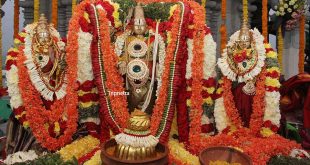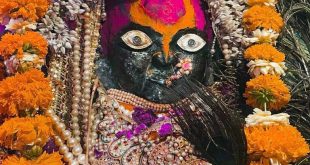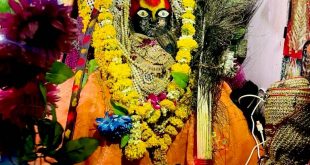Shirdi Dwarkamai
Shirdi Dwarkamai is the place where Baba spent his life until his last breath. That is why Dwarkamai is known as the “Heart of Shirdi” as devotees call him “God on Earth”. Dwarkamai is the only masjid, a temple in it. At first, the mosque is covered in the knee-deep hole and with cracked walls, and Baba is the one who turned that as the Dwarkamai. The energy and conferred of Sai Baba are taken over with the blessings as soon as the devotee’s step-in to the Dwarkamai.
Inside Dwarkamai:
When Sai Baba started to stay in the mosque, it was a small unused shaky mud structure. There are no Dhuni, iron bars around the mosque as of now. There are deep pits and holes in the ground. When baba was sitting with some of the devotees, there was a crack overhead. On raising his hand and telling “Wait, wait”, the cracked roof stopped. This happened when the devotees gathered for lunch. After they went out the large piece of roof cracked down where the devotees previously sat. Baba’s devotees sometimes hassle him to allow them to reconstruct the Dwarkamai, but he doesn’t need to shift so he initially refused.
In the 1890’s one of the devotees had delivered some building materials to the mosque for the reconstruction of the building but baba redirected to the couple of local temples where there is a need for restoration. In 1912, after many attempts, baba finally accepted and let them ahead with the renovations. The construction is only done on the alternate nights when Baba spends the night in Chavadi.
The Mosque is a 2-levelled structure in which many processions are taken place for Sai Baba. The 1st level consists of 2 rooms is the sketch of Sai Baba and a huge stone on which he used to sit; the 2nd is the room which has the palanquin. In front of these 2 rooms, a small temple with a saffron flag is rested.
On the 2nd level is a square stool made completely of stone. This stool is used by baba when he’s taking bath. Here there are big grinding stones known as “Tiragali” and a wooden vessel called “Kolamba”. This Kolamba vessel is the same where baba used to keep the Bhiksha that is brought from the village.
Another attraction of Dwarkamai is an oil painting of Sai Baba sitting on the wooden carved shrine. The painting conveys several sides and emotions to Sai Baba like Patience, Kindness, unflinching faith, generosity and self-belief in an artistic and beautiful manner.
Dhuni
Dhuni is one of the important maintenance in several traditions like Hinduism, Sufism, and Zoroastrianism. So Baba wherever he used to stay whether it is a mosque, under neem tree or the forest he used to lit the fire and is one of the important things Baba used to follow. Baba did not prevent others from touching the Dhuni, but actually villagers used to take those embers for their household fires. Whenever Radhakrishnayi used to spring-clean and whitewash the mosque at festival times should move the Dhuni into the streets. Baba would also throw his old torn clothes and would adjust the fire with his foot.
One day, the fire in the Dwarkamai got an extreme degree out of control, with flames jumping up to the roof. None of those present with Baba take the risk to say anything to him but they were anxious. Baba responded to their discomfort, not by prayers, but by majestically stroked his Satka (a stick) against a pillar and ordering the flames to come down and be calm. At each rap, the flames diminished and the fire was soon restored to normal.
The small pair of silver Padukas were placed where Baba used to sit which is placed in front and right of Dhuni. The Dhuni you see now is well maintained in a carefully designed structure lined with special fire bricks in the same place that Baba used to have it. Baba used to say repeatedly about this spot as the burial place of Muzafar Shah with whom he once lived and for whom he cooked.
In 1998 the Shirdi Santhan took the responsibility of reconstructing the Dhuni pit and a chimney is constructed on it.
Udi:
From both before and since from Baba’s Mahasamadhi, Baba used to give the Udi which is taken out from Dhuni to his devotee who has the healing power of pains or sickness. There are many cases that are truly proved by the experiences of his devotees. As dhuni lightening is a continuous process and the continuation of Baba’s own practice, the udi come from the very fire that Baba himself lit and tended, it is considered extremely holy.
Today the Udi is kept on various places in small trays. Udi along with the Prasadam of Sai Baba is available in the shop outside the Samadhi Mandir.
Tulsi Brindavan:
A Tulsi Brindavan is on the left at the back about a chest height will be seen while coming down from the upper part of the Dwarkamai. The plant is placed by some of the devotees by taking Baba’s permission at the time of the renovation of Dwarkamai. This tells that Baba is the person who equally respects and follows all the religions.
 Hotel Booking, Tour and Travel Planning, Online Tickets Tour Planning, Designing Packages, Hotel Booking
Hotel Booking, Tour and Travel Planning, Online Tickets Tour Planning, Designing Packages, Hotel Booking


